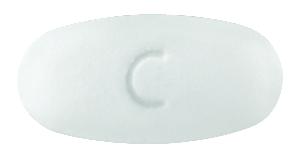Erythromycin Disease Interactions
There are 5 disease interactions with erythromycin.
Antibiotics (applies to erythromycin) colitis
Major Potential Hazard, Moderate plausibility. Applicable conditions: Colitis/Enteritis (Noninfectious)
Clostridioides difficile-associated diarrhea (CDAD), formerly pseudomembranous colitis, has been reported with almost all antibacterial drugs and may range from mild diarrhea to fatal colitis. The most common culprits include clindamycin and lincomycin. Antibacterial therapy alters the normal flora of the colon, leading to overgrowth of C difficile, whose toxins A and B contribute to CDAD development. Morbidity and mortality are increased with hypertoxin-producing strains of C difficile; these infections can be resistant to antimicrobial therapy and may require colectomy. CDAD must be considered in all patients who present with diarrhea after antibacterial use. Since CDAD has been reported to occur more than 2 months after antibacterial use, careful medical history is necessary. Therapy with broad-spectrum antibacterials and other agents with significant antibacterial activity should be administered cautiously in patients with history of gastrointestinal disease, particularly colitis; pseudomembranous colitis (generally characterized by severe, persistent diarrhea and severe abdominal cramps, and sometimes associated with the passage of blood and mucus), if it occurs, may be more severe in these patients and may be associated with flares in underlying disease activity. Antibacterial drugs not directed against C difficile may need to be stopped if CDAD is suspected or confirmed. Appropriate fluid and electrolyte management, protein supplementation, antibacterial treatment of C difficile, and surgical evaluation should be started as clinically indicated.
Erythromycin (applies to erythromycin) liver disease
Major Potential Hazard, Moderate plausibility. Applicable conditions: Biliary Obstruction
The use of oral erythromycin, especially erythromycin estolate and erythromycin ethylsuccinate, has been associated with occasional cases of hepatic dysfunction, including elevated liver enzymes and hepatocellular and/or cholestatic hepatitis. Therapy with oral erythromycin should be administered cautiously in patients with liver disease. Additionally, erythromycin is primarily excreted by the liver into the bile. The effect of liver and/or biliary disease on erythromycin clearance is unknown. Empiric dosage adjustments may be appropriate in patients with impaired hepatic or biliary function.
MDVs (applies to erythromycin) prematurity
Major Potential Hazard, Moderate plausibility. Applicable conditions: Prematurity/Underweight in Infancy
Parenteral medications formulated in multidose vials often contain benzyl alcohol as a preservative. Their use is considered by drug manufacturers to be contraindicated in neonates, particularly premature infants and infants of low birth weight. When used in bacteriostatic saline intravascular flush and endotracheal tube lavage solutions, benzyl alcohol has been associated with fatalities and severe respiratory and metabolic complications in low-birth-weight premature infants. Thus, single-dose formulations should always be used in infants whenever possible. However, many experts feel that, in the absence of benzyl alcohol-free equivalents, the amount of the preservative present in these formulations should not necessarily preclude their use if they are clearly indicated. The American Academy of Pediatrics considers benzyl alcohol in low doses (such as when used as a preservative in some medications) to be safe for newborns. However, the administration of high dosages of these medications must take into account the total amount of benzyl alcohol administered. The level at which toxicity may occur is unknown.
Macrolide antibiotics (applies to erythromycin) myasthenia gravis
Moderate Potential Hazard, Moderate plausibility.
The use of macrolide antibiotics has been reported to exacerbate symptoms of myasthenia gravis and trigger new onset of symptoms of myasthenic syndrome. Therapy with these agents should be administered cautiously in patients with a history of myasthenia gravis.
Macrolide antibiotics (applies to erythromycin) QT prolongation
Moderate Potential Hazard, High plausibility. Applicable conditions: Hypokalemia, Magnesium Imbalance, Arrhythmias
Macrolides have been associated with prolongation of the QT interval and infrequent cases of arrhythmia. Clarithromycin and erythromycin should be avoided in: patients with known prolongation of the QT interval, ventricular cardiac arrhythmia, including torsades de pointes; patients with proarrhythmic conditions such as uncorrected hypokalemia or hypomagnesemia, clinically significant bradycardia, or receiving other drugs that prolong the QT interval.
Switch to professional interaction data
Erythromycin drug interactions
There are 676 drug interactions with erythromycin.
Erythromycin alcohol/food interactions
There are 2 alcohol/food interactions with erythromycin.
More about erythromycin
- erythromycin consumer information
- Check interactions
- Compare alternatives
- Pricing & coupons
- Reviews (67)
- Drug images
- Side effects
- Dosage information
- During pregnancy
- Support group
- Drug class: macrolides
- Breastfeeding
- En español
Related treatment guides
Drug Interaction Classification
| Highly clinically significant. Avoid combinations; the risk of the interaction outweighs the benefit. | |
| Moderately clinically significant. Usually avoid combinations; use it only under special circumstances. | |
| Minimally clinically significant. Minimize risk; assess risk and consider an alternative drug, take steps to circumvent the interaction risk and/or institute a monitoring plan. | |
| No interaction information available. |
Further information
Always consult your healthcare provider to ensure the information displayed on this page applies to your personal circumstances.


